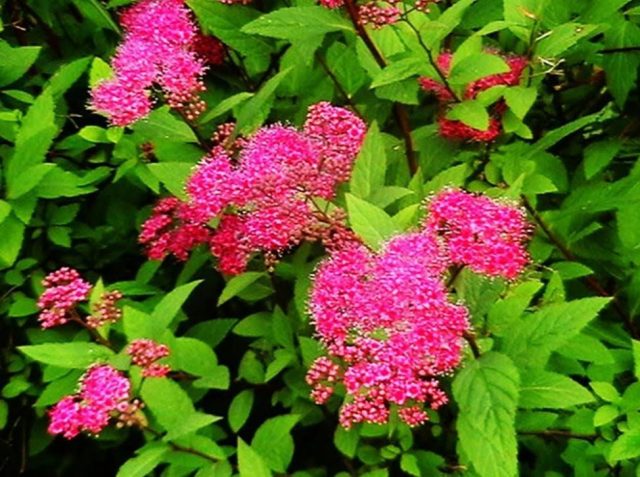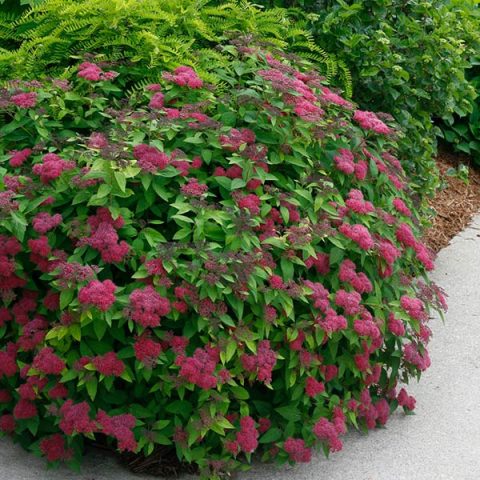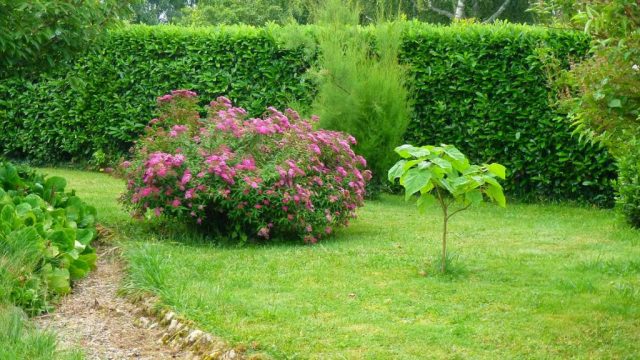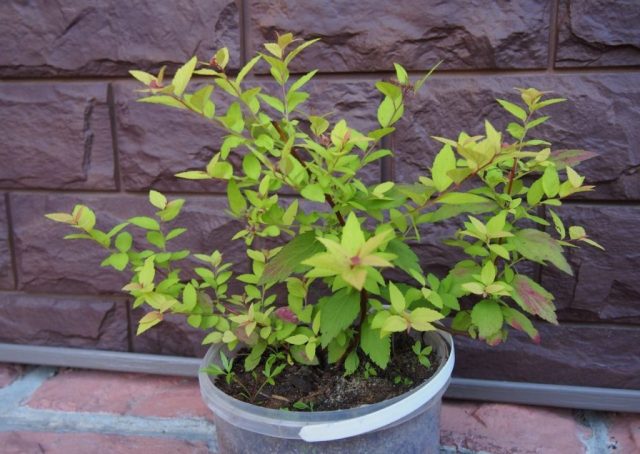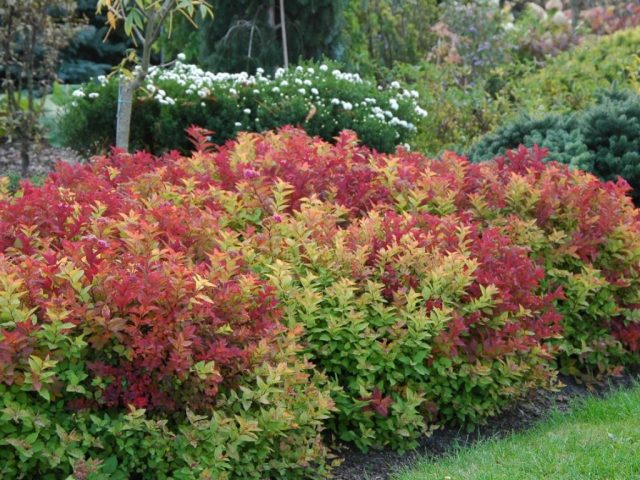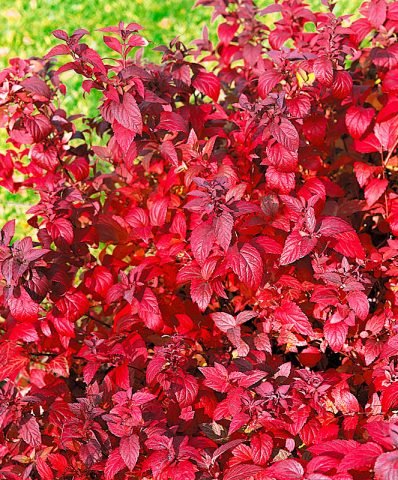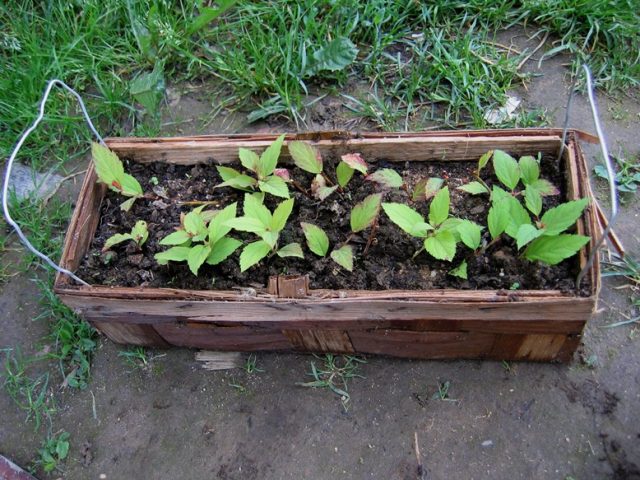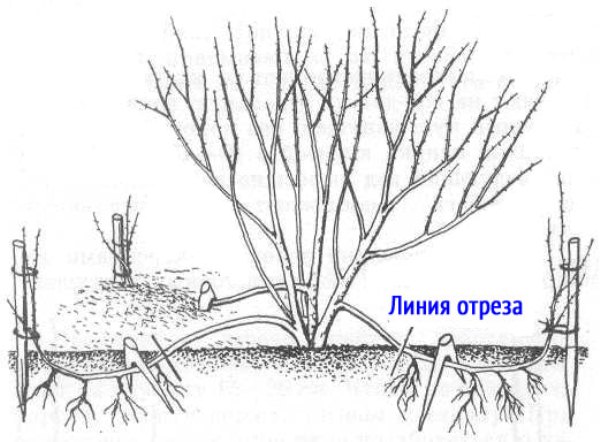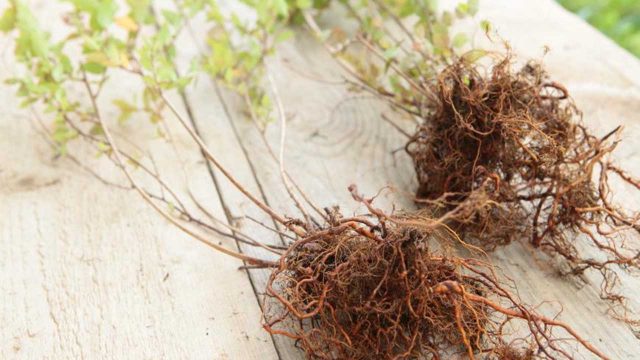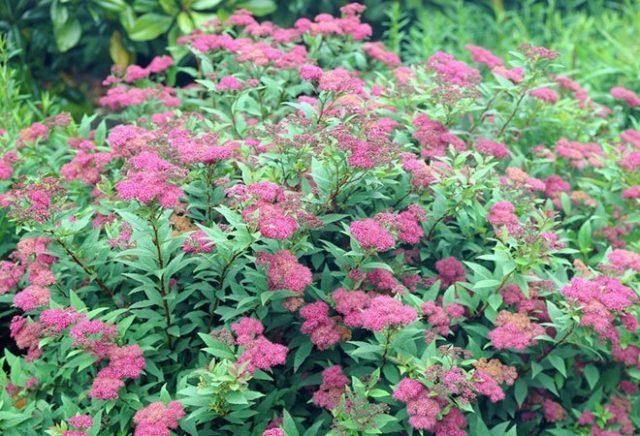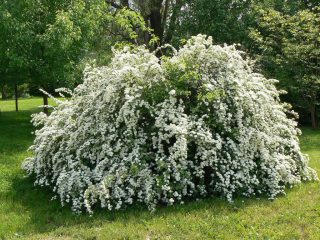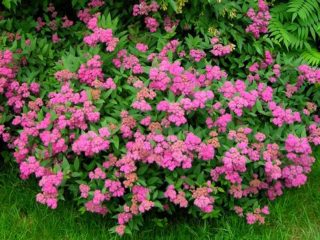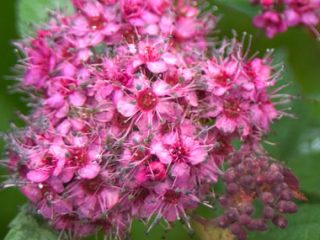Content
If I had to make a rating of the most popular shrubs in landscape design, then, undoubtedly, Japanese spirea would take one of the leading positions. And there is nothing surprising here, because this plant is an example of decorativeness, unpretentiousness and versatility. One of the representatives of the genus, the Japanese spirea Frobeli, has firmly taken its place both in modern garden catalogs and in the hearts of true connoisseurs of decorative cultures.
Description of spirea Japanese Frobeli
Spiraea Japanese Frobeli (Spiraea japonica Froebelii) is a compact decorative deciduous and at the same time flowering shrub. When blooming, young leaves have a purple hue, which changes to a dark green by early summer. In mid-July, the Frobeli variety, like all Japanese spireas, blooms with dense corymbose inflorescences.
Spirea Frobeli are distinguished by their large size and rich dark pink color. The flowering period is long - until mid-September, but in autumn the decorative effect does not decrease due to the acquisition of bronze-red leaves.
The height of the spirea of the Japanese Frobeli is up to 120 cm, the width of the bush is about the same in diameter. Thus, the Frobeli spirea has a spherical shape, which, for greater effectiveness, is recommended to be emphasized with annual pruning.
Spirea Japanese Frobeli in landscape design
All Japanese spireas easily fit into the look of the garden, thanks to their compact shape, spectacular appearance, pliability in formation and variety of varieties. Most often, designers suggest using them as low sheared borders, as part of tree and shrub compositions, in rocky gardens, in ceremonial flower beds, and much less often in specimen plantings.
Spirea Japanese Frobeli in any role will not remain unnoticed, thanks to the spectacular spring-autumn color of the foliage and the magnificent summer crimson-pink flowering. The neat shape of the bush is supported by a uniform growth of no more than 8-10 cm per year. A win-win spirea Japanese Frobeli looks in the vicinity of conifers, barberries, cinquefoil, hosts and other species and varieties of spirea.
Planting and caring for the Japanese Frobeli spirea
When purchasing Japanese spiraea seedlings in nurseries and garden centers, you should give preference to plants in containers (SCS), since they take root faster and better in a new place. If buds are found on the purchased shrub, then they must be removed so as not to weaken such a young spirea Japanese Frobeli, as in the photo below. Planting and caring for a shrub should be disassembled in stages.
Preparation of the planting site and seedling
Spirea is an unpretentious shrub, easily reconciling with insufficiently fertile soils and poor lighting. Spirea Japanese Frobeli will grow and even bloom well with just 3-4 hours of direct sun per day. But, nevertheless, she will prefer a lighter area and it is on it that she will show her best qualities.
Japanese spirea will not tolerate stagnant water, so you should not plant it in natural relief depressions and on heavy clay soils.If there is no choice, then it is necessary to make a drainage layer of broken brick or crushed stone in the planting pit, or place Frobeli's spirea on embankments, retaining walls and other artificial elevations.
Plants with ACS are planted in early spring (before bud break) or in autumn (before the end of leaf fall). Spirea Japanese Frobeli in a container can be planted at any stage of active growing season. A pit for a plant up to 40 cm deep is prepared a week or more before the expected planting date. A few hours before, the seedling is kept in a solution of Kornevin or another root formation stimulator. Plants of Japanese spirea with ZKS are plentifully shed with the same preparation before planting.
Landing rules
If necessary, drainage is laid on the bottom of the pit with a layer of about 10 cm, and then filled with prepared soil, consisting of 50% of fertile soil and a mixture of peat and sand taken in equal parts. The soil is abundantly moistened and the bush is planted so that its root collar is not below the surface layer or is 2-3 cm above it. The soil is well compacted around the trunk and spilled again from the watering can so that the earth settles.
Watering and feeding
Japanese spiraea is not demanding on moisture, but in the year of planting it requires more careful attention than in all subsequent ones. The frequency of watering depends on the weather and on the availability of mulch in the trunk circle. For top dressing, mineral fertilizers are used: at the beginning of the growing season, these are nitrogen fertilizers, starting with the laying of buds - phosphorus-potassium fertilizers. At the end of August or at the beginning of September, you can spray with potassium monophosphate, which will help you safely spend the first winter.
Pruning
All summer-flowering spireas, including the Frobeli variety, need annual early spring pruning. Even before the leaves bloom, when the spireas begin to wake up after winter sleep, they carry out sanitary pruning, cutting out all weak and thin branches. Last year's growth is shortened to well-developed buds. Adult shrubs, starting from 4-5 years of age, are cut off more radically - at a height of 30-40 cm from the soil surface. This formation stimulates the active growth of strong shoots, which will bloom well already in the current season.
The video tells how often to cut a spirea:
Preparing for winter
The winter hardiness of the Japanese Frobeli spirea is declared by the originator of the variety at a level of -25 ° C, that is, this plant is suitable for cultivation in zone 4 of the USDA. Therefore, only young, recently planted specimens need special preparation for winter. The soil surface in the trunk circle is mulched with dry compost or tightened with geotextiles. This is done after the establishment of stable frosts, usually in late October or early November. If strong winter winds prevail in the region, then it is necessary to provide a support for the young bush.
Reproduction
The seed method for the Japanese Frobeli spirea disappears immediately, since seedlings from hybrid varieties do not retain their maternal properties and do not represent decorative value.
Of the vegetative methods, the most acceptable are:
- Green cuttings.
- Winter cuttings.
- Reproduction by layering.
- Division.
Green cuttings
Reproduction in this way is carried out in the summer, simultaneously with the beginning of flowering. A strong vertical shoot is chosen, cut into cuttings, each of which bears 4-5 leaves. The lower cut under the kidney is made oblique, the upper cut is straight. Leaves on cuttings are cut in half to reduce moisture evaporation. The two bottom sheets are removed completely.
For 3-5 hours, the cuttings of the spirea are kept in a growth stimulator - Zircon, HB-101, Ecosil and others, or just in water. But after that, the lower cut is dusted with Kornevin powder, and then immediately planted in moistened sand or vermiculite, deepening by 2-3 cm.Cuttings are placed in a box at an angle of 30-45 °. The film is pulled from above (on metal-plastic arcs) and left in a shaded place until rooting. Cuttings need to be sprayed daily with clean water from the finest spray to maintain a stable moisture level.
Winter cuttings
Cutting lignified cuttings is carried out in September-October, removing the remnants of leaves from them, if they have not yet flown. Prepare the bed by filling it with sand and humus for digging. Cuttings soaked in water for 2-3 hours are buried in moist soil in an inclined form by 5-6 cm. The bed is mulched with fallen leaves, you can additionally cover it with a non-woven cloth or a vegetable box. Rooting usually occurs in the spring when it gets warmer and there is enough moisture in the soil. By the fall, the rooted bushes of Japanese spirea will already give a small increase.
Reproduction by layering
This is a reliable way to get small numbers of young plants. For its implementation, several lower horizontal shoots are selected and placed in prepared shallow furrows around the mother liquor. The branches are pinned to the soil in 1-2 places using metal brackets or bent electrodes. They fall asleep with earth, leaving the top of the shoot on the surface, which is tied vertically to a small peg. The soil in this place is constantly moistened, and even better - mulched with a layer of peat or cut grass. You can separate the young Frobeli spirea in a year, next spring, and immediately put it in a permanent place.
Division
This method of propagation is not often used, since it is more suitable for young plants that are easier to dig up without damage. The roots of the spirea are washed so that you can see how best to cut the bush into pieces. At each section, it is necessary to leave at least 2-3 strong shoots. For the operation, a pruner or a sharp knife is used, fresh cuts are treated with brilliant green or coal powder. Too long roots must be shortened, and then the cuttings should be planted in the prepared pits.
Diseases and pests
Spirea Japanese Frobeli is rarely affected by diseases, and possible yellowing and drying of the leaves are most often the result of improper care or attack by pests. Of the fungal diseases, verticillary wilting is most likely, in which the leaves begin to dry and turn yellow, starting from the lower branches. Quick help in the form of spraying with a copper-containing preparation, provided by spirea, will stop the spread of a pathogenic infection.
Spiraea Japanese Frobeli belongs to the Pink family, therefore, it is affected by pests common to all of its representatives, such as rose leafworm and leaf miner, or miner fly. The fight against them is carried out using available insecticides, and the affected leaves must be immediately removed from the bushes and destroyed.
In addition, aphids and spider mites can cause the greatest harm to spirea. In the fight against aphids, the drug Biotlin has proven itself well, and the spider mite lends itself to destruction with the help of various acaricides such as Fitoverma, Kleshchevit and other means containing the active ingredient aversectin.
Reviews of spirea Japanese Frobeli
Conclusion
Spirea Japanese Frobeli is a versatile plant for any type of garden. It will perfectly fit into the natural style and will find a place for itself in geometrically even, cropped borders. She will have enough space on 3 acres, but the luxurious bush will not be lost in the park area. And the simplicity of this variety of Japanese spirea is its pleasant bonus for every gardener and landscape designer.
